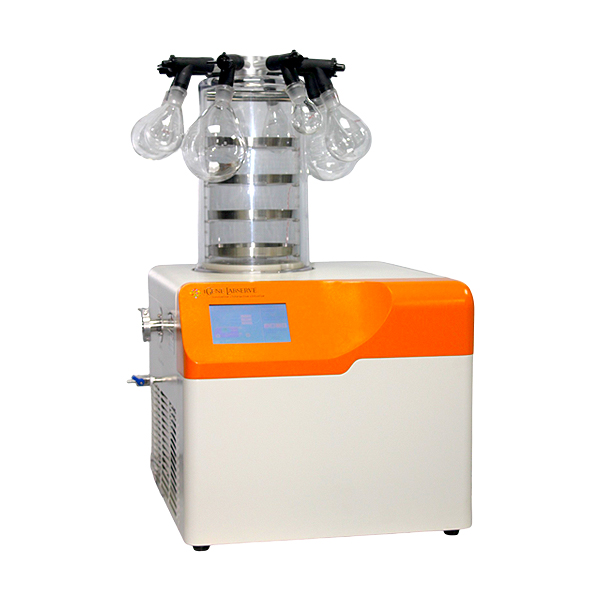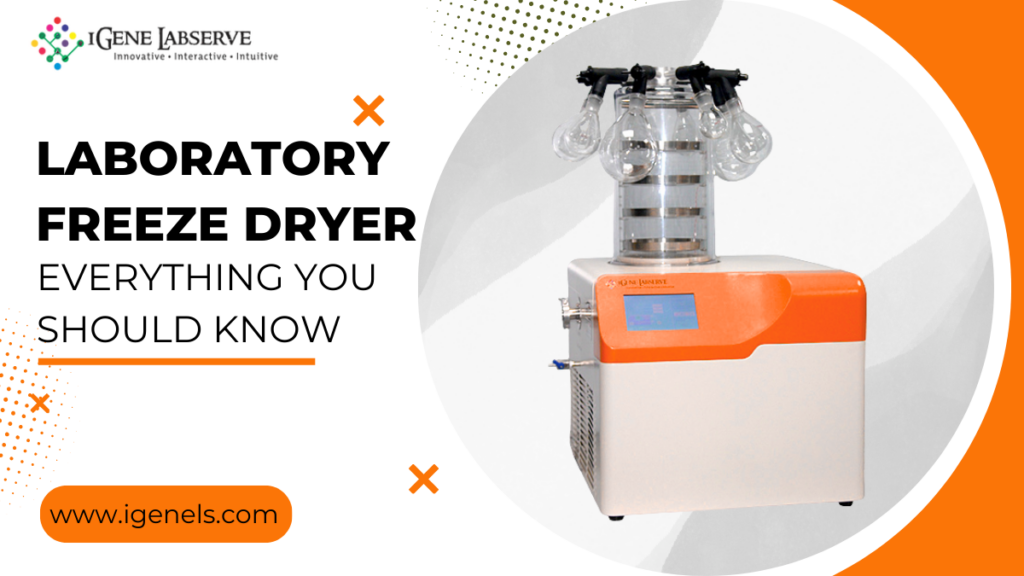In the world of research and pharmaceutical industries, preserving biological samples and sensitive substances is a delicate task. That’s where a Laboratory Freeze Dryer comes into play. It’s not just a piece of lab equipment—it’s a game-changer for long-term storage and high-quality preservation. Whether you’re working in biotechnology, pharmaceuticals, or academia, understanding how a Laboratory Freeze Dryer works can help you make the most of this powerful tool.
In this blog, we will explore the concept, types, working principles, parts, pros and cons, and the essential do’s and don’ts of using a Laboratory Freeze Dryer.
What is a Laboratory Freeze Dryer?
A Laboratory Freeze Dryer, also known as a lyophilizer, is a device used to preserve perishable materials by removing water content through the process of sublimation. It works by freezing the material and then reducing the surrounding pressure to allow the frozen water in the substance to change directly from solid to gas.
Therefore, this method is ideal for materials that are heat-sensitive or biologically active—such as vaccines, proteins, enzymes, and even food samples used in research labs.

Types of Laboratory Freeze Dryer
There are three main types of Laboratory Freeze Dryers based on design and application:
1. Manifold Freeze Dryer
- Suitable for small-scale or multiple sample processing.
- A manifold connects vials or flasks to a drying chamber.
- Researchers use it in environments where they lyophilize individual samples.
2. Shelf Freeze Dryer (Tray Freeze Dryer)
- It features shelves with controllable temperature settings.
- Suitable for bulkier or batch processes.
- Common in pharmaceuticals and production-level freeze drying.
3. Bench-Top Freeze Dryer
- Compact design for laboratory benchtops.
- Ideal for small labs or pilot-scale testing.
- Often includes digital controls and touch screen interfaces.
How do manufacturers make a Laboratory Freeze Dryer?
A Laboratory Freeze Dryer typically includes the following materials and components:
- Chamber Material: Usually made from stainless steel for durability and easy cleaning.
- Vacuum System: Built with high-quality vacuum pumps that create low-pressure environments.
- Refrigeration Unit: Consists of compressors and condensers to achieve freezing temperatures.
- Sensors and Controls: Digital control panels and sensors for temperature, pressure, and process monitoring.
Each unit is carefully assembled to ensure airtight conditions, temperature accuracy, and user-friendly operation for lab professionals.
Why Should You Use a Laboratory Freeze Dryer?
There are several reasons why a Laboratory Freeze Dryer is essential in laboratory settings:
- Preserves Sample Integrity: Maintains the biological and chemical stability of substances.
- Long-Term Storage: Lyophilized samples can be stored without refrigeration.
- Minimal Contamination Risk: Operates in a sealed system reducing chances of contamination.
- Retains Structure and Activity: Ideal for pharmaceuticals, enzymes, and tissue samples.
- Efficient Rehydration: Freeze-dried samples can be easily reconstituted without losing effectiveness.
How Does a Laboratory Freeze Dryer Function?
The process of freeze-drying, or lyophilization, involves three primary stages:
1. Freezing Phase
The sample is cooled below its triple point to ensure that sublimation, not melting, occurs. This phase solidifies the water content in the sample.
2. Primary Drying (Sublimation)
Vacuum is applied, and the temperature is slightly raised. Ice sublimates into vapor without passing through the liquid phase. This stage removes around 95% of the water.
3. Secondary Drying (Desorption)
Remaining bound water molecules are removed by further increasing the temperature. The final product is a dry, porous structure ready for storage.
Parts of a Laboratory Freeze Dryer
A standard Laboratory Freeze Dryer consists of:
- Drying Chamber – Where the sample is placed.
- Shelves or Manifold – For holding trays, vials, or flasks.
- Vacuum Pump – Creates a low-pressure environment.
- Condenser – Captures and solidifies water vapor.
- Refrigeration Unit – Maintains freezing temperatures.
- Heating System – For sublimation and desorption phases.
- Control Panel – Allows monitoring and adjustments.
Advantages and Disadvantages of a Laboratory Freeze Dryer
✅ Advantages
- Excellent for heat-sensitive samples.
- Preserves sample quality and structure.
- Long shelf life without refrigeration.
- Easy rehydration and reusability.
- Reduces microbial growth by removing moisture.
❌ Disadvantages
- Expensive initial investment.
- Time-consuming process.
- Requires trained personnel.
- Not suitable for high-fat or high-sugar materials.
- Regular maintenance is necessary.
Do’s and Don’ts of Laboratory Freeze Dryer
✅ Do’s
- Pre-freeze your samples before starting.
- Regularly maintain vacuum pumps and seals.
- Calibrate temperature and pressure sensors.
- Use proper containers to avoid contamination.
- Monitor the drying cycle closely.
❌ Don’ts
- Don’t overload the chamber.
- Avoid using samples that are not freeze-drying compatible.
- Don’t skip preventive maintenance.
- Never open the chamber before the cycle completes.
- Avoid using flammable or hazardous solvents inside.
The Bottom Line
A Laboratory Freeze Dryer is a vital tool for labs that need to preserve the integrity and longevity of sensitive samples. While it requires careful operation and investment, its benefits in scientific research and pharmaceutical development are unmatched.
Whether you’re handling vaccines, enzymes, or tissue samples, understanding the ins and outs of a Laboratory Freeze Dryer can take your preservation game to the next level.

